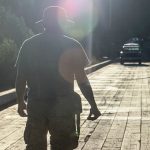4 Experiments to Increase your Productivity
Photo by Chris Roussakis
By Amanda Follett Hosgood
If you’re like me, your work day started something like this:
Sit down at computer. Check email. Check social media. Get drawn into the lives of people you barely know or haven’t seen since grade school. Do a little online Christmas shopping. Dream of winter vacation. Search flights to warmers climates. Eventually get to workday to-do list.
And just like that, a half hour of the day is gone.
It’s hard to remember a time before internet: before unfathomable information was at our fingertips, making our workday that much easier and more efficient, but also more distracted. Here are a few surprising facts from productivity researcher Chris Bailey:
- Our work takes about 50 percent longer when we continuously switch between tasks.
- On average, we switch tasks every 40 seconds when we work in front of a computer.
- We switch between computer applications 566 times during the average workday and check email 88 times.
Bailey decided to dedicate himself to studying productivity after graduating from business school a decade ago. Today, he writes articles, pens a blog at A Life of Productivity and has written two books on the subject. The most recent, Hyperfocus (Penguin Random House, 2018), was published in August.
Especially compelling are Bailey’s unconventional experiments on productivity, which include binge-watching Netflix, living like a caveman and being a complete slob. Results were varied, but also both interesting and inspiring.
Bailey’s experiments, which he admits are less-than-scientific, examine the effects of different scenarios on increasing productivity. Whether his experiments inspire you to lock yourself in isolation for 10 days or restrict your cellphone use, everyone should be able to find some solid advice for making better use of our time in this information-overloaded world. Here are a few highlights.
Meditation
Bailey is a big proponent of meditation and dedicates himself to a daily practice. “Meditation and mindfulness look absolutely pointless on the surface, and that’s because on the surface, they are,” he says. “The real magic of meditation happens on the inside. Meditation and mindfulness completely reprogram your mind.”
“Meditation and mindfulness look absolutely pointless on the surface, and that’s because on the surface, they are,” he says. “The real magic of meditation happens on the inside. Meditation and mindfulness completely reprogram your mind.”
He points out that meditation doesn’t necessarily mean sitting: Anyone feeling daunted by the idea of remaining still for more than five minutes can simply incorporate mindfulness into daily tasks. Being mindful means focusing on a single thing in the present moment, such as taking a moment to really taste your coffee rather than slurping it back as you take a call and careen into your favourite parking spot.
But while mindfulness is a start, taking even a few minutes every day to actually meditate, to sit in silence and clear your mind, will improve focus and productivity by allowing you to separate out “highest leverage activities,” Bailey says.
Spending 10 minutes a day to get way more done? Sounds like a good deal to me.
Drinking coffee
Ever wonder whether your morning coffee is ultimately helping or hindering your productivity? Well, Bailey has done the research.
The verdict: It does.
Sometimes.
“To get as much energy out of caffeine as possible, don’t drink too much, drink lots of water, drink caffeine over a longer period of time (and wait a bit before your second cup), stay away from sugary energy drinks, don’t drink caffeine on an empty stomach (or first thing in the morning), and eat very well if you consume caffeine,” he says.
Bailey, an avid green tea and occasional coffee drinker, experimented with coffee, green tea and black tea. He notes that an initial caffeine hit stimulates your central nervous system, reduces physical fatigue and restores alertness, making you more productive.
Of course, then comes the inevitable crash.
How hard you crash depends on how high your caffeine fix. Because a cup of coffee has the greatest amount of caffeine at 108 mg (green tea had the least with 25 mg), expect both the biggest boost and the hardest fall from coffee. While the productivity gained by tea wasn’t erased by its downfall, coffee was different: “I think on the whole, at least to me, the cost of drinking a cup of coffee was greater than its benefits,” Bailey says.
But devoted coffee drinkers take heart: Bailey offers tips on making the most of your caffeine high while reducing the side effects, including spreading your intake over a longer period, staying hydrated and eating well.
Peer pressure
One of Bailey’s experiments involved watching 70 hours of TED Talks over the course of a week (that’s 296 talks, by the way) and while I wasn’t sold on the idea of overloading your brain with information, one takeaway did stand out:
The importance of surrounding ourselves with people who inspire us to be better.
For example, Bailey notes a study that showed when a person’s friend became obese, they had a 171 percent increased risk of also becoming obese, with similar results found for drug use, depression and sleep deprivation. Similarly, if there are traits you’d like to change about yourself, seek out people who bear those traits and deliberately spend time with them. Be intentional with your social time. As well, seek out a tribe that shares your goals, such as joining a running club or a book club.
And while overloading your brain with TED Talks might not be the answer, when you do crave a little screen time, the 18-minute inspirational hit of a TED Talk is time well spent.
Be bored
Bailey marks the absence of boredom from the day he purchased his first iPhone. For me, it was the day I first logged onto Facebook: my life was forever changed as writer’s block spent staring at the wall became the urge to check my newsfeed.
The time we spend on our phones is time we used to spend feeling bored: waiting at bus stops or in lineups or in the dentist’s waiting room. It’s time we once spent allowing our minds to roam.
While boredom itself might not be productive, a wandering mind makes space for creativity and inspiration to hit. For one month, Bailey spent an hour a day being bored. He spent that hour with mind-numbing tasks like reading the iTunes terms and conditions, sitting on hold with Air Canada’s baggage claims department and watching grass grow.
He breaks the results into two categories: active and passive boredom. The former is when you’re undertaking something so incredibly dull that your brain is active, but disinterested. The latter allows the mind to wander and is ultimately more productive.
Bailey uses the analogy of the space between cars on the highway: “It isn’t the car speed that allows traffic to continue flowing—it’s how much space exists between the cars. Our work tasks are the same: the more attentional space we leave between them, the more we’re able to accomplish.”
“It isn’t the car speed that allows traffic to continue flowing—it’s how much space exists between the cars. Our work tasks are the same: the more attentional space we leave between them, the more we’re able to accomplish.”
Leaving gaps between the tasks in our day allows us to process what we’ve been working on and plan what’s next. It also makes space for the mind to rest. Deliberately allowing our minds to wander allows us to connect past, present and future. Bailey describes this as “scatterfocus,” a state he’s also learned to achieve through knitting.
In the time it took me to write this, my mind wandered to the usual places: social media, chocolate, Google searches, more chocolate. Partway through, I got up, left my desk and made a tea. I went outside and brought a load of firewood from the garage to the backdoor. I breathed the air, took in the views and felt the sunshine.
I returned to my desk rejuvenated and ready to work. Perhaps that five-minute gap in my day will return tenfold in productivity.
Amanda Follett Hosgood was born and raised in Ontario. She graduated from Carleton University’s journalism program in 1997 and headed west to Canmore, Alberta where she worked as reporter and assistant editor at the Canmore Leader and Banff Crag & Canyon. In 2006, she moved farther north and west to Smithers, B.C., completing a Master of Arts in Communication Specializing in International and Intercultural Communication through Royal Roads University in Victoria, B.C in 2009. She lives with her family on Wet'suwet'en territory.




